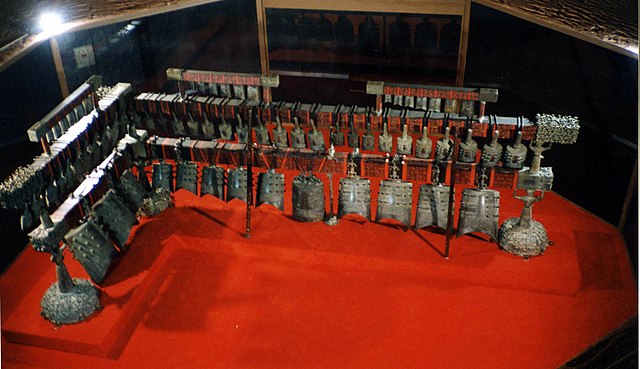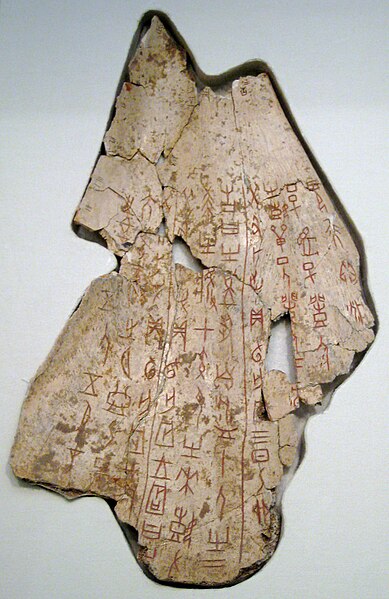Chu was an ancient Chinese state during the Zhou dynasty. Their first ruler was King Wu of Chu in the early 8th century BC. Chu was located in the south of the Zhou heartland and lasted during the Spring and Autumn period. At the end of the Warring States period it was destroyed by the Qin in 223 BC during the Qin's wars of unification.
A lacquerware painting from the Jingmen Tomb (Chinese: 荊門楚墓; Pinyin: Jīngmén chǔ mù, about 316 BC) of the State of Chu, depicting men wearing precursors to Hanfu (i.e. traditional silk dress) and riding in a two-horsed chariot
Bronze from the Tomb of Chu in Xichuan County.
Bronze bells from the Tomb of Marquis Yi of Zeng, dated 433 BC, State of Chu.
Spearhead from the state of Chu
Old Chinese, also called Archaic Chinese in older works, is the oldest attested stage of Chinese, and the ancestor of all modern varieties of Chinese. The earliest examples of Chinese are divinatory inscriptions on oracle bones from around 1250 BC, in the Late Shang period. Bronze inscriptions became plentiful during the following Zhou dynasty. The latter part of the Zhou period saw a flowering of literature, including classical works such as the Analects, the Mencius, and the Zuo zhuan. These works served as models for Literary Chinese, which remained the written standard until the early twentieth century, thus preserving the vocabulary and grammar of late Old Chinese.
Rubbing of a Zhou dynasty bronze inscription, c. 825 BC
Shang dynasty oracle bone script on an ox scapula
Seal script on bamboo strips from the Warring States period







